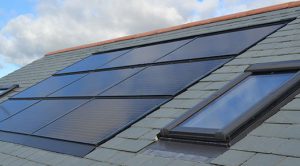Solar is surging as costs fall and firms scale projects, with the International Energy Agency projecting PV Solar to be the largest renewable by 2029
Solar is central to decarbonisation.
Costs have fallen sharply and deployment has accelerated, with solar photovoltaic (PV) on track to become the largest renewable source by 2029 according to the International Energy Agency (IEA).
What is solar energy
“Solar energy works by converting energy from the sun into power, producing both electricity and heat,” says the National Grid.
Panels are typically silicon-based within a metal frame and glass casing.
When this material is exposed to photons of sunlight it releases electrons and produces an electric charge.
That direct current is then inverted to alternating current for use in homes and businesses, National Grid says.
According to the Solar Energy Industries Association (SEIA), PV devices use semiconductors to free electrons and drive current through a circuit, powering devices or feeding the grid.
Types of solar energy
According to SEIA, PV devices use semiconductors to free electrons when struck by photons, driving a current that powers devices or feeds the grid.
It can scale from calculators and signs to homes and large businesses.
Read more: Sustainability Mag






